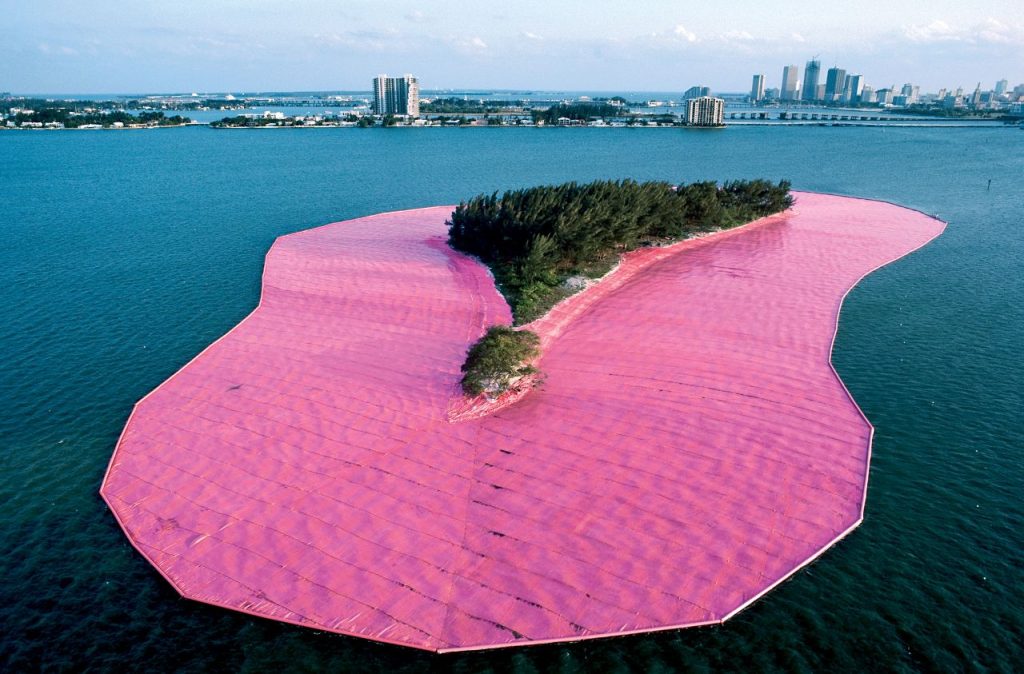Krispin Joseph PX
What we call Art is not always presented as Art. Art is not defined yet, so that anything can be Art; even an object purchased from the shop becomes an Art object. Artists challenge the audience and the people engaging in Art’s work. How can this become an Artwork? This question is enduring and fascinating because the answer is always ambiguous.
Christo, an artist from Bulgaria who lived and worked in different places worldwide, is well known for the ‘Wrapped’ Artwork. He died two years before at 84, and the legacy of his body of works is in the Air of Art practice. Christo escaped from Bulgaria to Prague and then Vienna in 1957. That marked political exile, and in Paris, he met his life partner and collaborator artist, Jeanne-Claude. That meeting changed Christo’s life forever. They start dreaming together. Their togetherness brings monumental environmental works of Art.
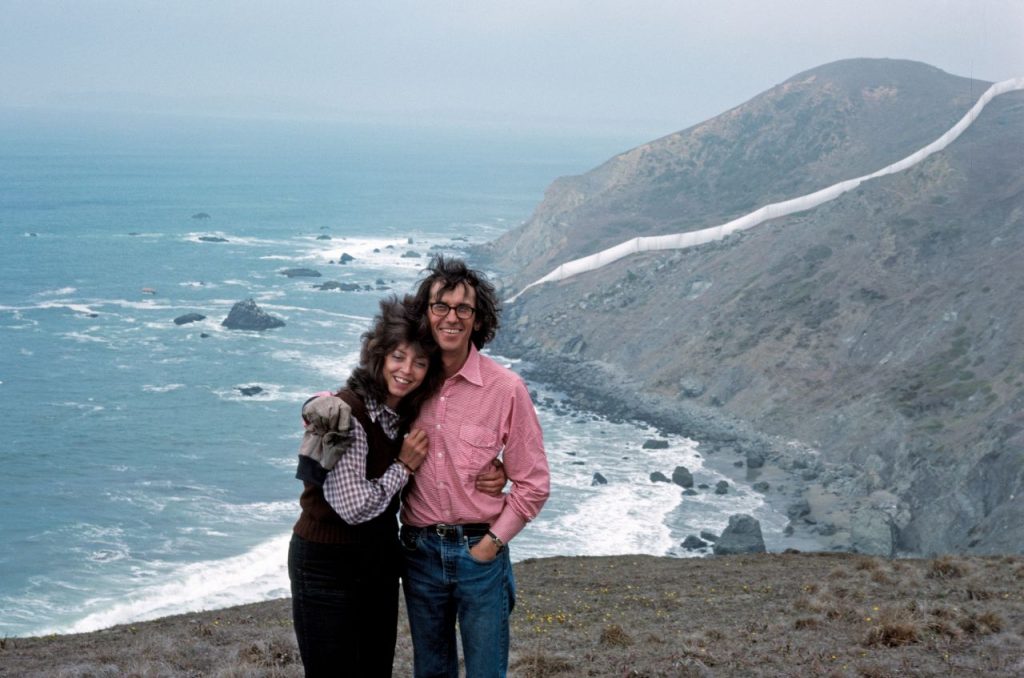
credit: cnn.com
Together, they transcended the idea of Art and started wrapping objects for monumental outdoor projects. They look into Art from a perspective that overcomes the traditional bounds of painting, sculpture, and architecture. Art theoretician talks about Art as a claim of someone who claims to be ‘the artist’. Christo’s early works are challenging and ‘brought people together’ for a cause: planet Earth. Christo dreamed of his Art Projects and realised them in his life. His works like Wrapped Coast near Sydney (1968–69), Valley Curtain in Colorado (1970–72), Running Fence in California (1972–76), Surrounded Islands in Miami (1980–83), The Pont Neuf Wrapped in Paris (1975–85), The Umbrellas in Japan and California (1984–91), Wrapped Reichstag in Berlin (1972–95), The Gates in New York’s Central Park (1979–2005), The Floating Piers at Italy’s Lake Iseo (2014–16), and The London Mastaba on London’s Serpentine Lake (2016–18) have always been discussed because of ambiguity. These spectacles always invite people close to artwork and away from work to see the artwork.
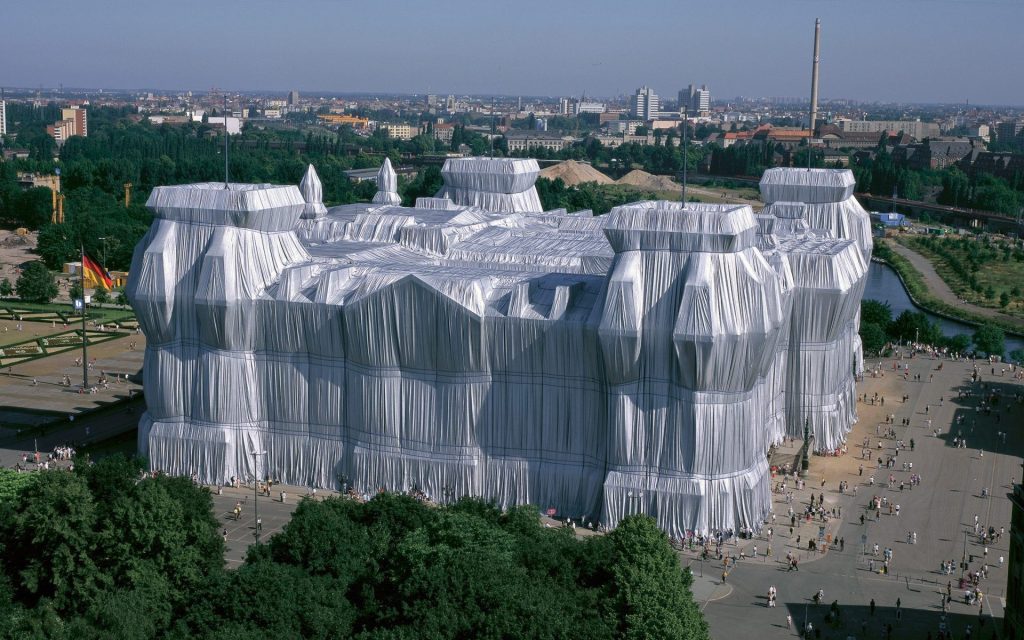
PHOTO: WOLFGANG VOLZ. COURTESY OF CHRISTO AND JEANNE-CLAUDE
Credit: galeriemagazine.com
From the beginning of their relationship, they credited their works as “Christo and Jeanne-Claude”; some take years to finish. Their works are significant, visually impressive and sometimes controversial, and spectacle. They never accept grants, scholarships, donations or public money to execute their works; instead, they finance their projects by selling their artwork. They bring many myriad elements into their art projects, and they don’t intend to have a deeper meaning; instead, the immediate aesthetic impact, their objective being simply for delight, beauty, and new ways of glimpsing the usual.
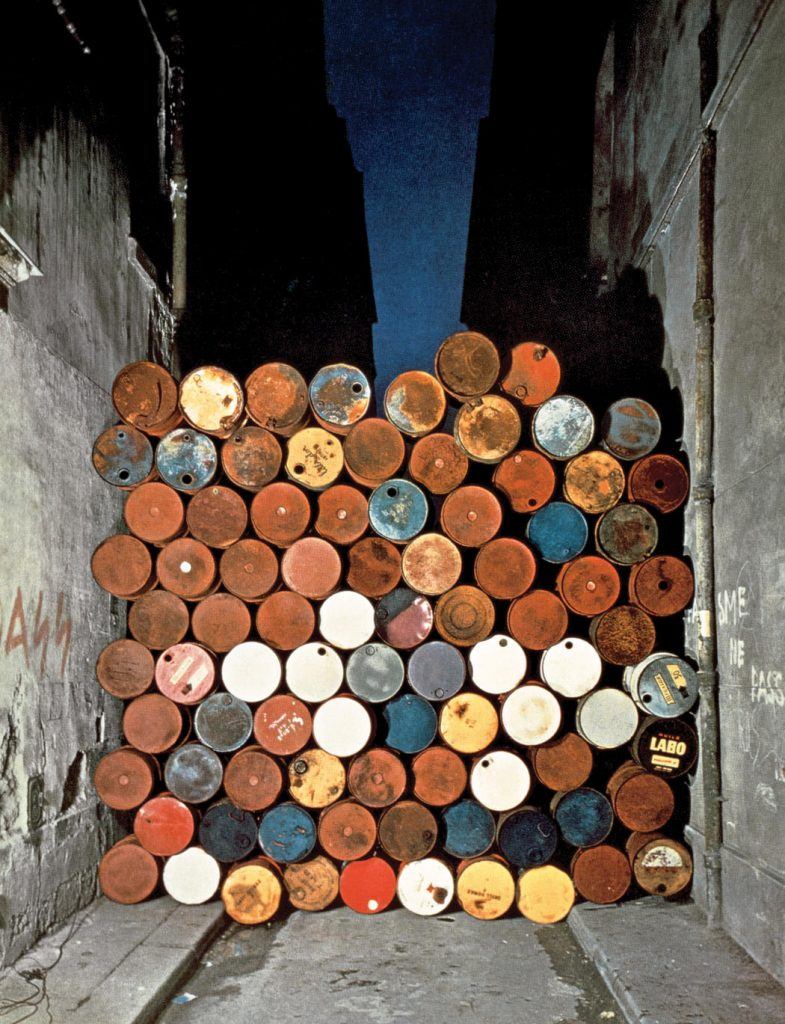
PHOTO: JEAN-DOMINIQUE LAJOUX © 1962 CHRISTO
In his early project titled Early Wrapping (1958-60), Christo wrapped sculptures composed of cans and bottles found in his studio surroundings. This project evolved the idea of the modern time phenomenon of Packing things. Christo and Jeanne-Claude think about modern human nature and ‘wrapping culture’.
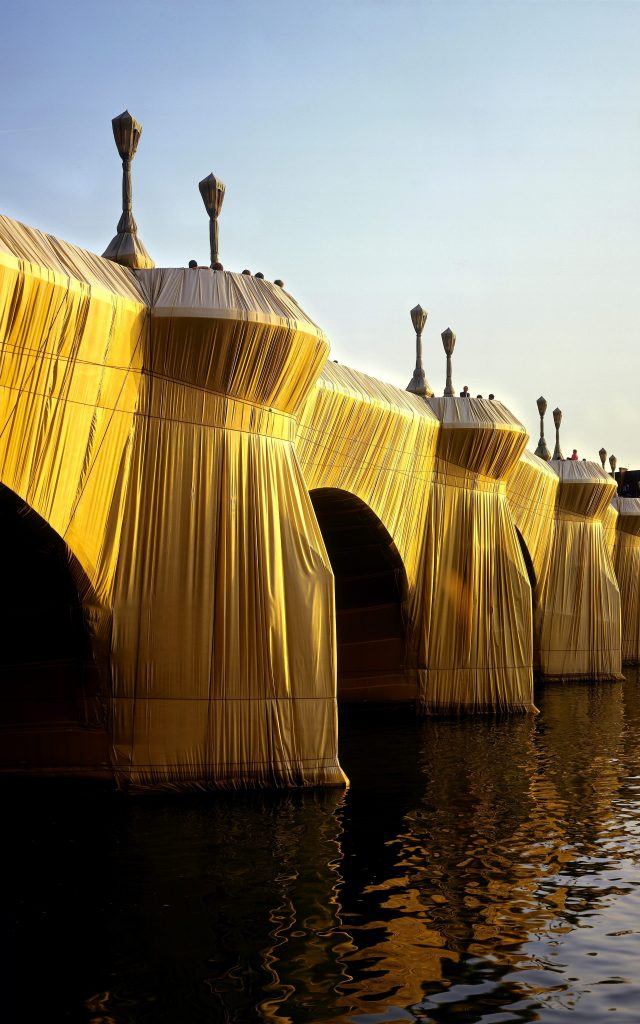
PHOTO: WOLFGANG VOLZ, COURTESY OF CHRISTO AND JEANNE CLAUDE
In the first collaboration of Christo and Jeanne, the Wall of Oil Barrels/The Iron Curtain (1961-62), they brought wrapped oil barrels and stacking as walls in public spaces and block access. They covered the oil barrels with cloth and rope and were fascinated with spatial reconfiguration. This theme slowly evolves through this project, becoming their future projects’ central idea. “We work with space that is not usually used for art. . . . Everything in the world belongs to somebody. There is not one square meter in the world that does belong to somebody. Jeanne-Claude and I borrow that space and create a gentle disturbance for a few days, says Christo in an interview.
In 1968-69, they finished the first major environmental project in Sydney titled Wrapped Coast—One Million Square Feet, Little Bay. They wrapped the coast and cliffs with cloths and covered a mile and a half along the coast of Little Bay. This fascinating idea uses a loosely synthetic fabric fastened with a rope across the natural physiques, which brings a new dimension to seeing the world and space. They changed the identity of the space with clothes, and that space became more surreal than real. “For this project, no drawing could simulate it; Our project was like life: Fragile, something we don’t have forever. . . . From the waterline, it was unbelievable. . . . You see the proportion. You can see the unexpected change of forms the fabric took with the wind. We never expected this, and that came from the incredible wind.” Christo said in an interview with Kaldor Public Art Projects in 2012.
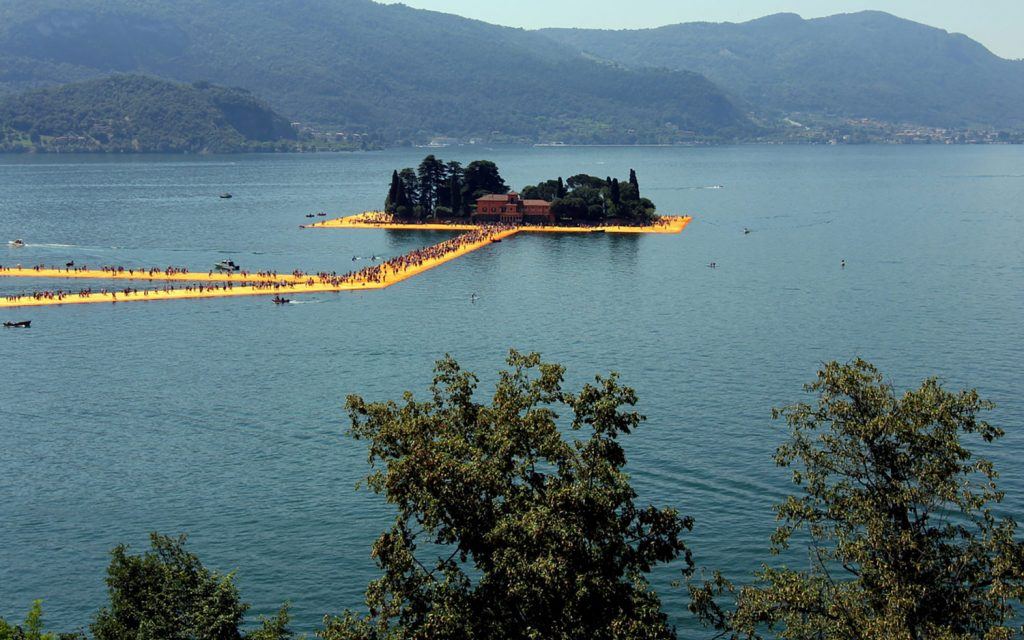
PHOTO: COURTESY OF CHRISTO AND JEANNE CLAUDE
In Pont Neuf (1975-85), they transform an old bridge into a modernist work of Art. This groundbreaking work covered the entire bridge and its 44 lamps with 440,000 square feet of golden fabric, trussed with 36,300 feet of rope. It took ten years to finish because of the French bureaucracy, and the total cost is around 2.5 million dollars and 300 workers.
The subsequent iconographical work is ‘Surrounded Island (Miami, 1980-83), a striking pink installation which took over Miami and used 6.5 million square feet of fabric to cover encircled 11 islands in Biscayne Bay.


